2023 Toyota Camry Hybrid SE Nightshade Review

FAST FACTS
| Engine: | 2.5L I4 + hybrid |
| Output: | 208 hp, 163 lb-ft |
| Transmission: | eCVT, FWD |
| US fuel economy (MPG): | 44/47/46 |
| CAN fuel economy (L/100KM): | 5.3/5.0/5.1 |
| Starting Price (USD): | $29,450 (inc. dest.) |
| As-Tested Price (USD): | $32,885 (inc. dest.) |
| Starting Price (CAD): | $33,810 (inc. dest.) |
| As-Tested Price (CAD): | $39,430 (inc. dest.) |
The 2023 Toyota Camry Hybrid SE Nightshade reminds me of an RPG.
In so many classic role-playing games, players are given a limited number of attribute points to spread across their characters’ stats. Maybe you’re the Leroy Jenkins type, and shovel all the points into attack power. Stealthy folks will favor speed. Pragmatists? High defense.
The Camry puts a lot of its eggs into the usability basket, and in Hybrid form, efficiency. That doesn’t leave a lot of change for the sexy, headline stuff like daring design or an engaging drive. In that sense, the SE Nightshade is almost a cheat code: Toyota has unlocked additional style points without pulling from any other category. Like some classic RPGs themselves, however, the Camry’s sheer age is starting to show.
Get a Quote on a New 2023 Toyota Camry2023 Toyota Camry Hybrid Review: What’s new?
This generation of Camry has been around since 2018, with a gentle facelift two years ago. We fully expect a complete generational shift for 2024—ideally one with some style cues pulled from the Prius—but ahead of that, Toyota’s ubiquitous sedan saw a few choice upgrades for 2023.
The popular Nightshade trim is once again available, building off all available SE trims (front-drive, all-wheel drive, and hybrid). Toyota has darkened the headlights and taillights for Nightshade duty this year, because that is still design shorthand for sportiness. As before, it pulls bits and pieces from the Camry TRD, including its front grille, black mirrors, and sweet 19-inch alloy wheels. In fact, the Nightshade does the TRD one better, because its wheels are matte bronze, which are approximately 817-percent cooler than black. I don’t care if that doesn’t square with the trim name.
Thrifty, stress-free driving
I’m just going to level with you: if it were my money, and for some unknown reason I was forced to buy a Camry and only a Camry, it would be a hybrid. The electrified powertrain leans into the strength of this car: easy, stress-free motoring. 209 horsepower is plenty—more than Peak Camry (2001, natch)—and who is going to argue with up to 52 mpg (4.9 L/100 km) combined? Okay, that number applies to the LE, but all other trims are still quoted at 46 mpg (5.1 L/100 km). This one ended up scoring right between the two, which is incredible for something this size.
The Camry steers, goes and stops with that same sense of competence as the rest of the vast TNGA platform family. Its pedals have a pleasant, immediately familiar weighting to them, making smooth progress easy. Same goes with the steering, which is light and predictable. The ride is generally smooth, though there’s more road noise than other mid-sized sedans. The bigger wheels and low-profile tires do introduce an added edge of harshness to the largest potholes, but the Camry never feels less than buttoned-down.
A common criticism of this particular 2.5-liter hybrid system is the flare of revs every time the gas engine wakes up. That’s still the case here in the Camry. The car’s relatively light weight means that, if you’re patient, you can make surprising amounts of progress on nothing but electrons. Still, I look forward to the new fifth-gen hybrid system’s smoother integration in the next model.
SEE ALSO: 2023 Toyota Prius First Drive ReviewA functional, thoughtful interior
With the death of the Avalon, the Camry is now the most spacious Toyota sedan you can buy. Yes, really: the Crown might look larger, but other than an additional inch of rear legroom, the new flagship is fractionally tighter in all other measurements.
SEE ALSO: 2023 Toyota Crown First Drive Review: The Emperor’s New GrooveThe market’s fascination with SUVs has distracted us from the fact that a mid-sized sedan is still very capable of shuttling four adults in comfort, or five in a pinch. There’s a full 38.0 inches (965 millimeters) of rear legroom—more than the RAV4. Like a lot of modern Toyotas, headroom is the limited factor, but it’s no worse than other sedans of this size. The SofTex-wrapped seats are reasonably comfortable, though the cushion feels thin. Only the driver’s seat is power-adjustable, too.
The Camry’s dashboard design prioritizes ease of use over flashy design. All of the important controls are within reach, except for the heated seat buttons, which look like a center console afterthought. Material quality is mid-pack.
Time machine tech
Nobody likes to hear Entune sucks. Not the would-be customers doing research, not the readers who’ve heard us make this same complaint over and over again, and certainly not the Toyota PR folks reading this.
But it does suck. It’s slow and laggy, and not just boring, but actively ugly. At this point most of Toyota’s lineup has switched over to an excellent new system, and if any models haven’t, their age is part of their charm (looking at you, Tacoma and 4Runner). The screen grew an inch recently, now stretching 9.0 inches across, but that just makes it easier to spot the pixels. The positives are few: the physical buttons are appreciated, and the (wired) Apple CarPlay works flawlessly. Use that, or Android Auto.
The rest of the tech suite is like the Camry itself: totally functional if not the most thrilling. There’s no digital instrument panel like in the refreshed Highlander, but the Camry’s dials are dummy-easy to read in all conditions, and the central screen can cycle between most important info. There’s an effective wireless charger, and a shallow storage space below it.
Perhaps best of all, Toyota Safety Sense 2.5+ is standard, with a comprehensive suite of driver assists that all work as advertised. The adaptive cruise control is maybe a little slow on the uptake when closing gaps, but I’d rather a cautious system than an aggressive one.
2023 Toyota Camry Hybrid Review: Dollars and sense
This is likely the last year you’ll be able to get into a new Camry Hybrid for under $30,000 in the US. It starts from $29,450 ($33,810 CAD) for the LE model, including destination. The SE Nightshade sits in the middle, with an as-tested price of $32,885 ($39,430 CAD). Our Canadian-spec tester includes blind-spot monitoring as standard; in the US, that contributes $900 to the bottom line.
There are spendier, fancier versions of the Camry, but that’s the thing: it’s a Camry. This one strikes a fine balance of functionality and frugality, and the added stylish bits do little to impact that. Don’t want the big bronze rollers? Ditch ’em for a regular SE and save even more money.
SEE ALSO: 2022 Toyota RAV4 Hybrid SE Review: Hooked on a FeelingThe only other Camry I’d recommend is the TRD, because I dig its iconoclast attitude and will miss the V6 when it inevitably disappears for the next gen. But that is a very different type of car, for a very different type of buyer.
Verdict: 2023 Toyota Camry Hybrid SE Nightshade Review
Even its twilight years, there are a lot of reasons to recommend the 2023 Toyota Camry Hybrid SE Nightshade. What it lacks in excitement it makes up for in sheer, determined competence. For folks who are honest with themselves about not actually needing a crossover, the Camry offers stress-free motoring, a long history of vault-like reliability, and—in the case of the SE Nightshade—just a pinch of added style. Take advantage of those extra attribute points.
FAQs
How much does the 2023 Toyota Camry Hybrid cost?
This year’s hybrid Camry kicks off at $29,450 ($33,810 CAD). The SE Nightshade sits around the middle of the trim walk.
What’s new on the 2023 Toyota Camry Hybrid?
For this year, the Camry Hybrid sees a handful of revisions on this Nightshade trim, with darkened head- and taillights, 19-inch bronze wheels, and a few other changes.
Is the 2023 Toyota Camry redesigned?
No, this is the same generation that debuted in 2018; we expect a full change-over for the 2024 model year.
Become an AutoGuide insider. Get the latest from the automotive world first by subscribing to our newsletter here.
LOVE IT
- Easy of use
- Great fuel economy
- Spacious interior
LEAVE IT
- Dated infotainment
- Dated interior
- 19s hurt ride quality

Kyle began his automotive obsession before he even started school, courtesy of a remote control Porsche and various LEGO sets. He later studied advertising and graphic design at Humber College, which led him to writing about cars (both real and digital). He is now a proud member of the Automobile Journalists Association of Canada (AJAC), where he was the Journalist of the Year runner-up for 2021.
More by Kyle Patrick



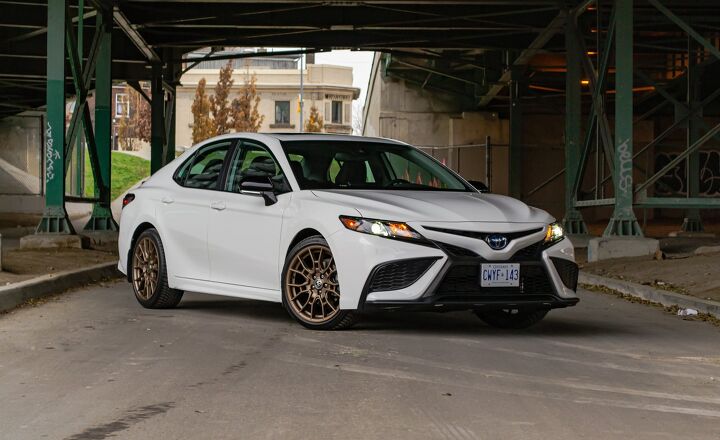


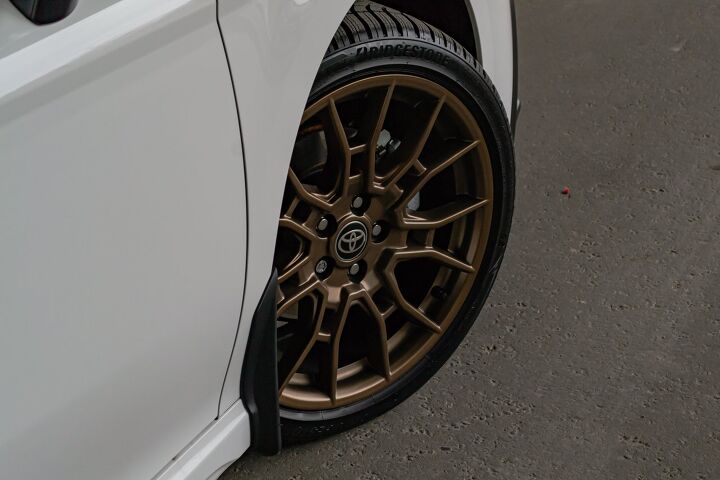


















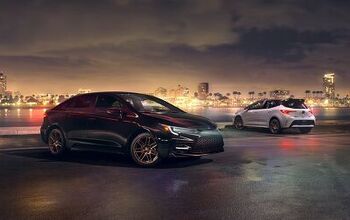

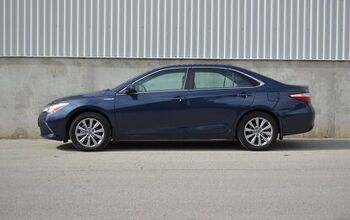

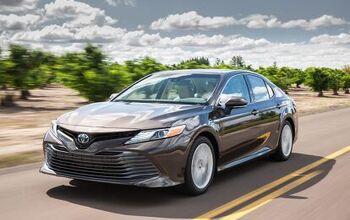

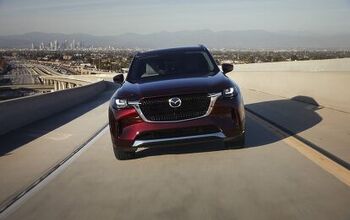

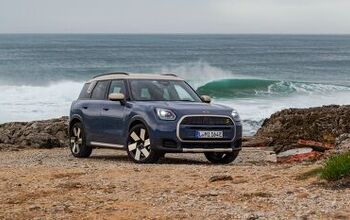

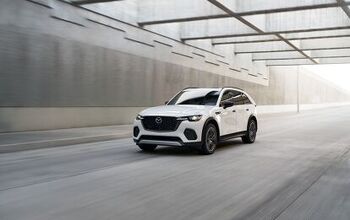
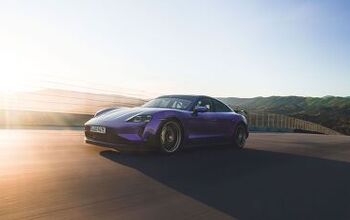
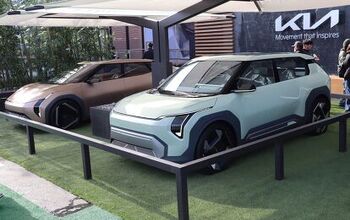


Comments
Join the conversation
I just rented a Camry SE for a wedding trip and drove it about 300 miles. This owner of three manual transmission cars (Miata, GTI, classic Saab Turbo convertible, plus a motorcycle) loved his rental car. My iPhone paired as soon as I entered the car and pushed one button. My non-hybrid SE was ridiculously fuel efficient, though like the author, I would have rather had a hybrid. The powertrain was smooth and quiet, as was the ride. And the firm SE seat was perfect for my five hours behind the wheel going from the east coast of Florida to the west coast and back during a morning and afternoon. Verdict: I wouldn't replace my GTI with a Camry, but I would easily recommend the car, hybrid version for efficiency, to my non-enthusiast friends without a moment's hesitation.